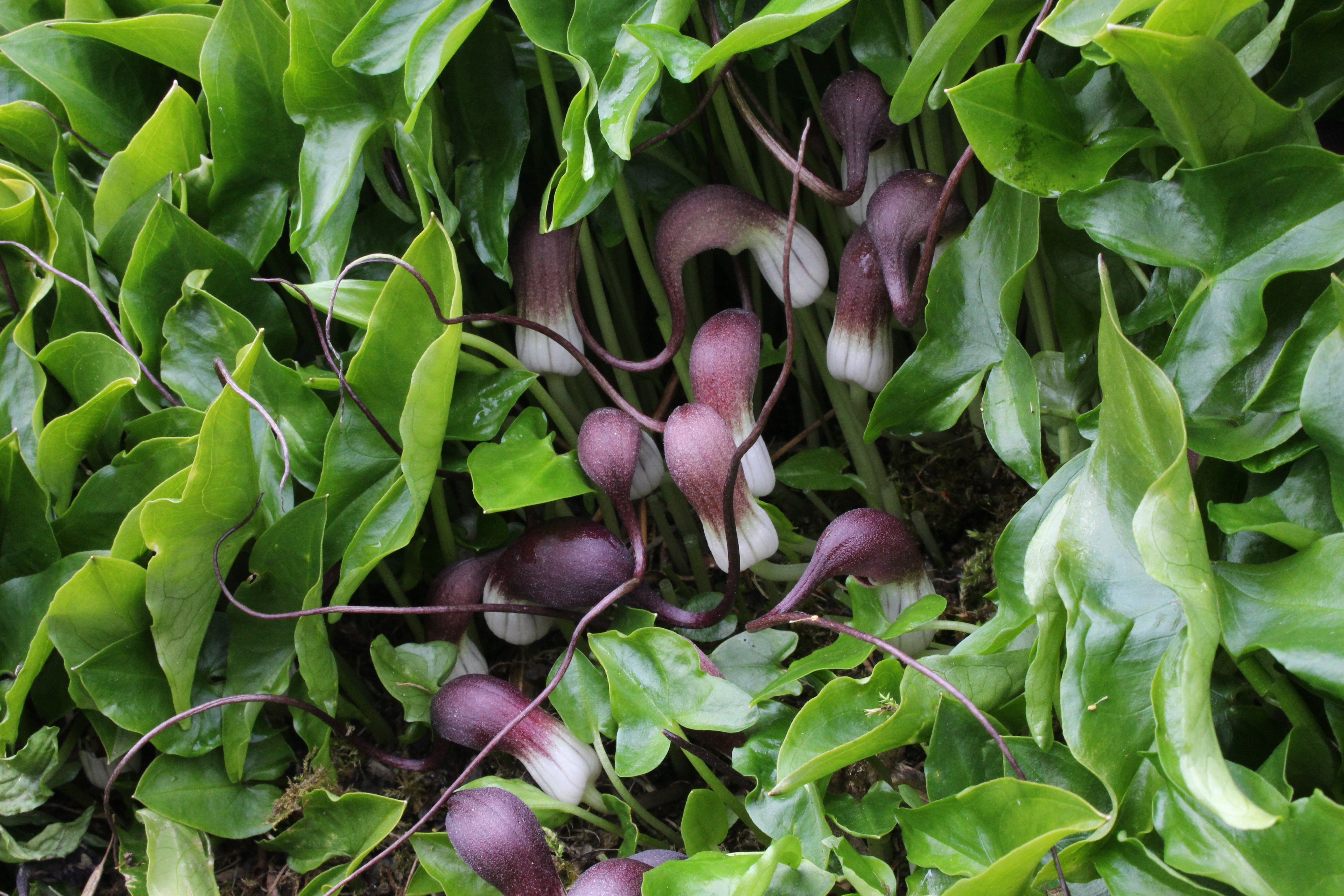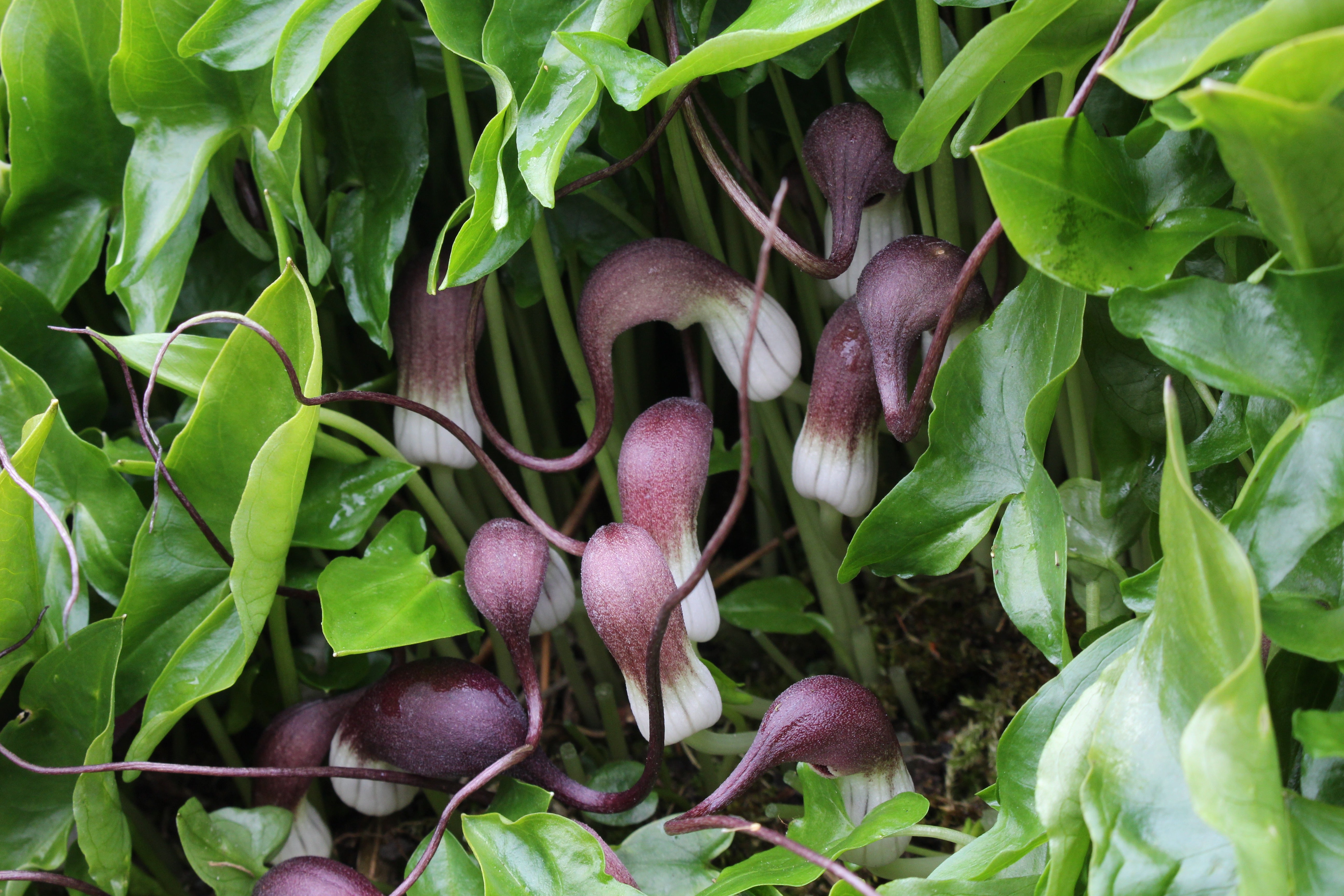Arisarum proboscideum
Approx. 0.5 litre pot
About this cultivar:
Arisarum proboscideum is a small tuberous-rooted woodland perennial in the Arum family. Proboscideum comes from the Greek word proboskis which means “elephant’s trunk”. The common name is mouse plant because the flower structure purportedly resembles a long-tailed mouse!
Arrowhead-shaped green leaves on long stalks rise directly from the ground to form a low-spreading carpet. Maroon and white flowers with unusual tail-like tips appear in spring, but are usually hidden by the much taller leaves. The flowers (spadix) are enclosed within a hooded dark purplish brown spathe (to 2" long) that tapers into a 6-inch long tail.
Propagation is by insects which are lured into the spathe through a tiny opening at the end of the tail. Once inside, the trapped insects transfer pollen from male to female flowers as they fight to escape. A different kind of mouse trap!
We love this easy to grow yet unusual plant. I often think the flowers seem to be hiding like mice…..
- Position: Partial shade
- Soil: Almost any soil that isn't too wet or dry
-
Flowers: April, May
- Other features: -
- Hardiness: H5 - Hardy in most places throughout the UK even in severe winters (-15 to -10°C), Fully hardy - Grows well in Ballyrobert!
- Habit: Clump forming
- Foliage: Deciduous
- Height: 5 - 15 cm (0.25 - 0.5 ft)
- Spread: 15 - 45 cm (0.5 - 1.5 ft)
- Time to full growth: 2 to 5 years
- Plant type: Herbaceous Perennial, Alpine or Rockery
- Colour: White, green, brown, purple
- Goes well with: -
About this genus:
Arisarum is a genus of flowering plants in the Araceae (Arum) family. It is native to the Mediterranean region, east to the Caucasus and west to islands of the eastern North Atlantic.
Arisarum are small perennials that develop from tubers or rhizomes. They produce dense clumps of long-stalked, heart- or arrow-shaped leaves and clustered, tiny flowers wrapped in curious hooded spathes.
The genus name comes from the Greek word arisaron which was used by Dioscorides in reference to aris, aridos, which was the name of a small herb mentioned by Pliny – probably referring too Arisarum vulgare.
We find they grow most places that have a bit of shade, aren’t too dry or wet. I have read that they do not like heavy clay yet….. they grow fine in our heavy clay!




